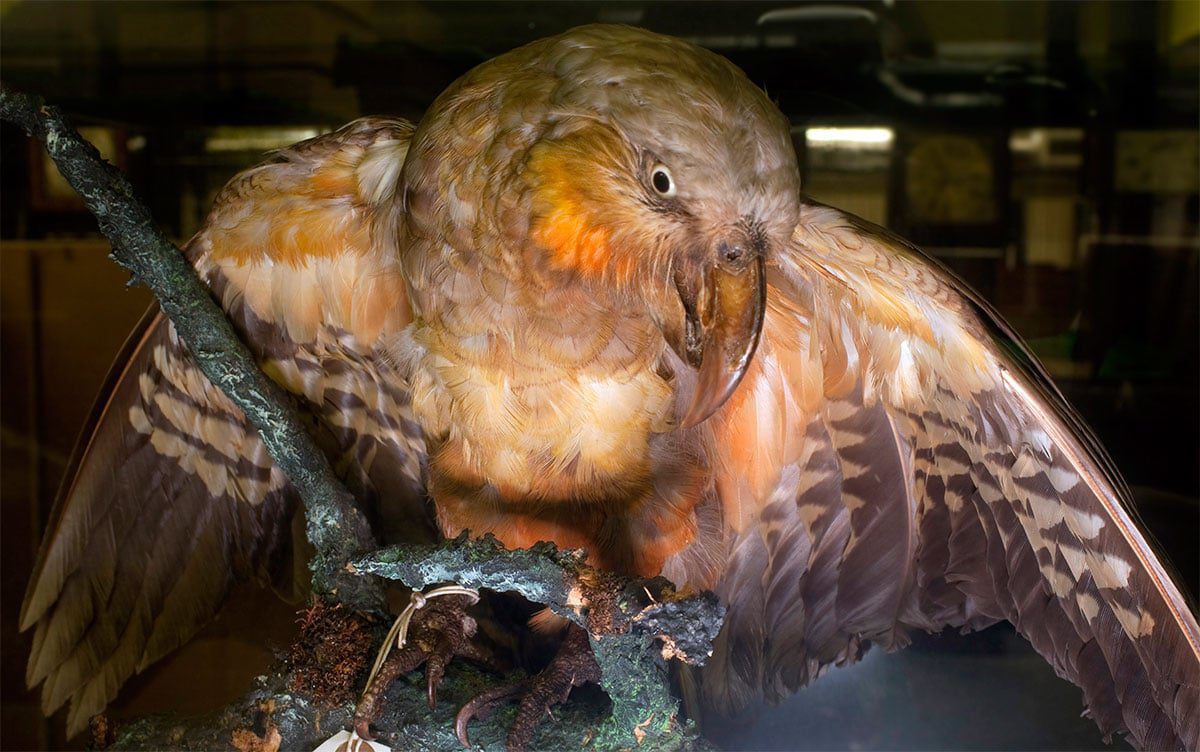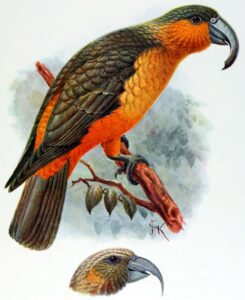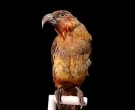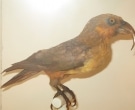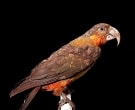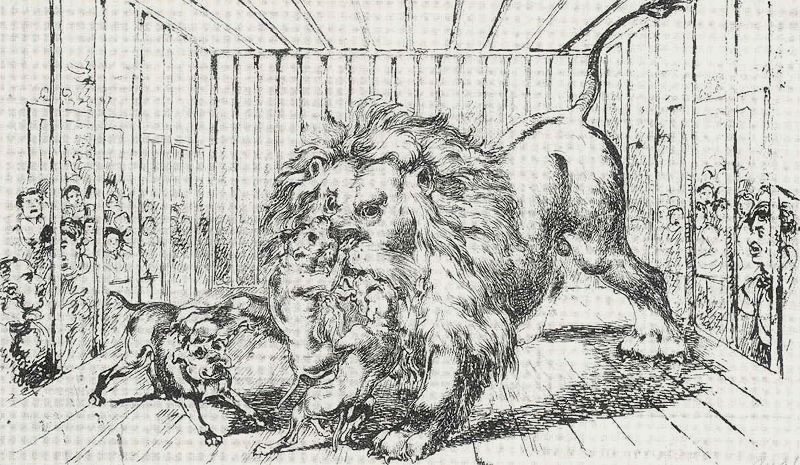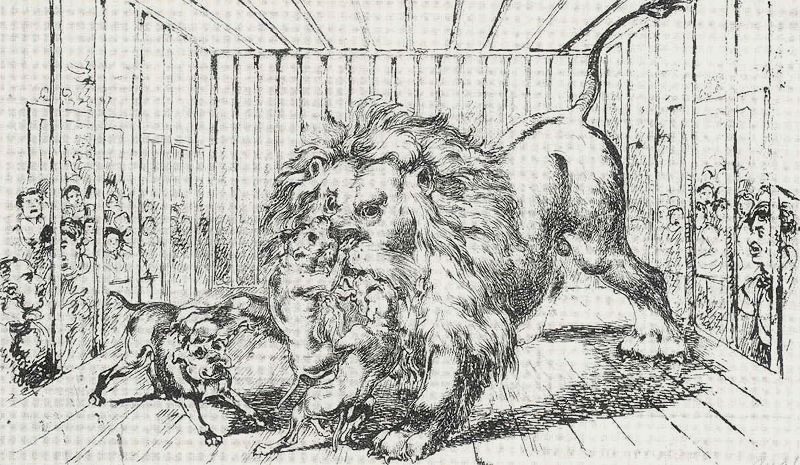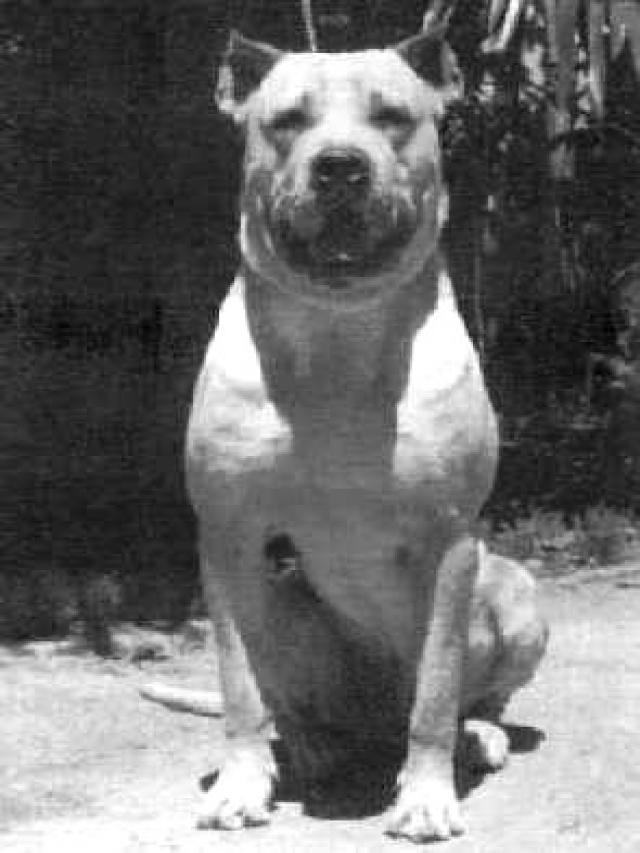Content |
|---|
Description:
The Norfolk Island Kaka (Nestor productus) was their large with a bill, wings short and wide, and with legs and feet large.
I had 38 centimeters long. The top of his head era gris pardusca, while its face varied from yellow to orange, sometimes with a reddish tint. It was said that his Hip It was greenish yellow, and upperparts, including the wings, they were mostly greyish-brown in color, slightly darker than the top of the head, with the bottom of the back and rump orange or dark red and the tail brown. Upper chest It was brown and gray bottom bright yellow, with the belly and sides reddish orange (Forshaw & Cooper 1981, 2002; Greenway 1958).
Its social structure and dispersion are not registered, but the Norfolk Island Kaka of New Zealand, he watched alone or in small groups of up 10 individuals (Higgins 1999).
Habitat:
Habit in the native forest in the Norfolk Island and about Phillip Island (Greenway 1958). The species could be observed both in the canopy of tall trees, and soil, the rocks (Gould, 1865, Greenway 1958).
Given its endemism in the Norfolk Island, the Norfolk Island Kaka It was presumably sedentary.
Reproduction:
Little is known of reproductive cycle of the Norfolk Island Kaka; just put on record of four eggs in tree holes (Gould 1865).
Food:
It is known that he fed on nectar Flowers tree white wood (Lagunaria) (Gould 1865). Definitely should be more varied. The captive birds they ate lettuce and the leaves of other vegetables, as well as dairy meals and fruit juice (Gould 1865). Presumably he foraged in both the soil and the canopy (Gould, 1865).
Distribution:
Its range was about 15,5 hectares.
It was endemic to the Norfolk island (in Australia) and nearby Phillip Island, Australia. It became extinct in the wild in mid-century 19 on Norfolk Island, and possibly a little later Phillip Island.
The species is believed to have had a very limited ability to move between islands., and probably he spent his whole life on the island of his birth (Gould, 1865).
In the Norfolk Island Kaka occasionally kept in captivity, as the birds were gentle and easy to capture alive (Gould 1865). The species He survived in captivity until after it had become extinct in the wild (Greenway 1958). There are no known captive populations and none has been reintroduced into the wild. The last known living bird was in captivity in London in 1851 (Garnett et to the., 2011).
No made extensive studies for this species. But, there have been a series of ornithological studies in the Norfolk Island since the species disappeared from the island (p.ej. Bell 1990, Robinson 1988, Schodde et al., 1983, Smithers y Disney 1969), no signs have been found of the species.
Conservation:
• Current category of the Red List of the UICN: extinct.
Rationale for the Red List category
This species was known in the Norfolk Island, but it was Extinguished to mid 1800. It is believed that the elimination of habitat and hunting have been the main drivers.
According to reports, was tame and, Therefore, hunted strongly convicts and early settlers and easily trapped as a pet.
No information is available on the population size before its decline.
"Norfolk Island Kaka" in captivity:
They were captured by his meekness and they were common in the Norfolk Island
Alternative names:
– Norfolk Island Kaka, Norfolk Island Kea, Norfolk Island Parrot, Norfolk Kaka (English).
– Nestor de Norfolk (French).
– Dünnschnabelnestor, Norfolkkaka, Norfolk-Kaka (German).
– Kākā-de-norfolk (Portuguese).
– Kaka de Norfolk (español).
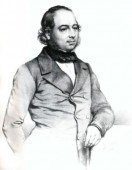
scientific classification:
– Order: Psittaciformes
– Family: Strigopidae
– Genus: Nestor
– Scientific name: Nestor productus
– Citation: (Gould, 1836)
– Protonimo: produced Plyctolophus
Images “Norfolk Island Kaka”:
————————————————————————————————
Norfolk Island Kaka (Nestor productus)
Sources:
– Avibase
– Parrots of the World – Forshaw Joseph M
– Parrots A Guide to the Parrots of the World – Tony Juniper & Mike Parr
– Birdlife
– Australian Government – Department of the Environment and Energy (Nest produced - Norfolk Island Kaka)
– Photos:
(1) – Natural Science Curatorial Trainee – Birmingham’s Norfolk kaka
(2) – Nestor productus Gould, 1836 by Huub Veldhuijzen van Zanten / Naturalis [CC BY-SA 3.0], via Wikimedia Commons
(3) – Nestor productus By Gould, 1836 [CC BY-SA 3.0], via Wikimedia Commons
(4) – Norfolk Island in Kaka (Nestor productus). The last bird in captivity died in London in 1851. Specimen from the Zoological Museum in Firenze, Italy by Thomas Wesener – Flickr
(5) – Nestor productus By Gould, 1836 [CC BY-SA 3.0], via Wikimedia Commons
(6) – The Norfolk Island in Kaka (Nestor productus) from the plate in the Bulletin of the Liverpool Museum. From the specimen in the Tring Museum by John Gerrard Keulemans [Public domain], via Wikimedia Commons
